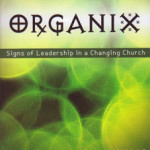I checked to see what searches people are using to find this blog, and I found that most people are finding me because of the calls to worship that I posted. I have not put one of those up in a while, so I will start doing that again. In the meantime I thought I could post my guidelines for how I conduct a call to worship.
Definition – The call to worship is an expression of God inviting the church to relational worship. It is not the speaker calling the church to worship, nor us, the church, inviting God to our worship service.
Length – Excluding the invocation prayer, the call to worship should be only about one minute long. Writing down what it to be said, including the invocation, will assist the speaker in keeping the call short and to the point. The exception to this would be when using videos, as they usually run about three minutes. Most of the calls I have posted on this blog are longer versions of what I actually say.
Learning Styles – Basic learning styles are auditory, visual, and kinetic. In general, most church services rely too much on auditory learning, which is the least effective way of learning. The speaker should try to use at least two different learning styles when presenting a call to worship. An easy way to do this is to prepare a PowerPoint slide with a visual to go along with what is being said or done. Videos are excellent visual/audio tools to use, but usually run more than one minute. Kinetic learning may be the most difficult to implement, but can be as simple as “passing the peace.”
Focus – While the call to worship follows the theme of the service or sermon, the call should be God focused. The service or sermon theme should be on the pastor’s sermon calendar.
Invocation Prayer – Invocation means to “call upon or appeal to.” It allows us to focus on God from the beginning. Use the first person plural “we” when making public prayers. Drawing directly from Scripture is a good way to build these prayers. The prayer should also follow the focus/theme of the service; everything is connected. The following is an excellent guide for prayers of invocation from The Worship Architect by Dr. Constance Cherry (2010)
| Address God by name. Indicate the deity to whom we are speaking. Draw upon the myriad of possibilities for names/titles that exist in the Scriptures. | O God, |
| Offer a divine attribute. Announce the nature of God by referring to one or more of God’s attributes or promises, establishing his divine character. | You are majestic in all the earth. |
| Make a petition related to God’s presence in worship. Call on God to do something for the community at worship, ie., be present, move through the Holy Spirit, receive our praises, hear our prayers, etc. | Though you are high and lifted up, you are also very near through the presence of your Son, our Lord Jesus Christ. May you Spirit make Christ’s presence known to us |
| State the intended result. Formulate the “so that” of the petition. Don’t just call on God to be present, but say why we would invite God’s presence. | so that we will worship and magnify your name to your glory. |
| Conclude with a brief doxology, praying in the name of Jesus, or a trinitarian ending. | In the name of the Father, the Son and Holy Spirit. Amen. |
Preparing for Praise – At some point (beginning, middle, or end depending upon what form the call to worship takes) have the congregation stand for singing.
Variety – We have the freedom and obligation to present the call to worship in a variety of ways, so use everything from liturgical to new media. Do not get caught doing the same thing every time. Eventually the speaker will find his or her own style, and will have something that they are best doing or is their favorite type (mine is the narrative story from history). However, the speaker is not looking to engage only his or her self, but the entire congregation. Whatever you do, practice, practice, practice, ahead of time.
©2011 Paul Tillman







Do you seek to undermine the cognitive regarding learning?
I hope I am understanding your question correctly. If you mean, do I want people to disengage thier rational mind, the answer is no. I hope to engage the imagination with one thought of God that will lead people to worship.
amen
Mark Wilson has a great article on leading a pastoral prayer http://revitalizeyourchurch.blogspot.com/2012/10/thirteen-thoughts-on-pastoral-prayers.html